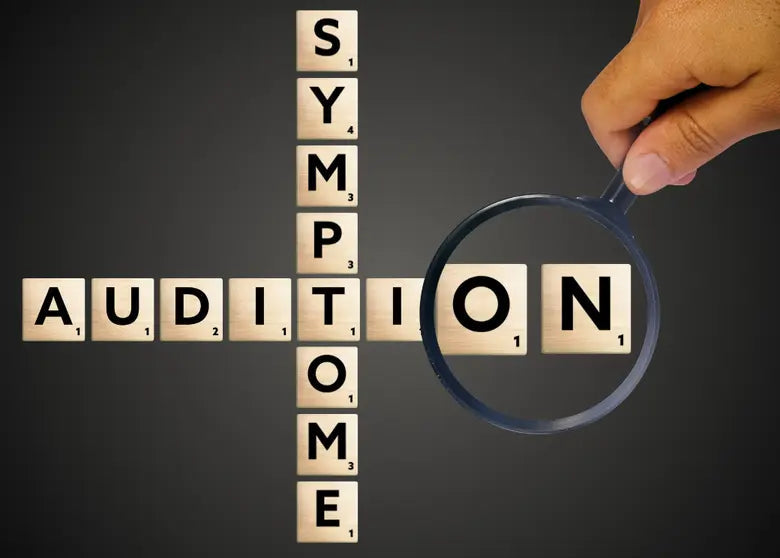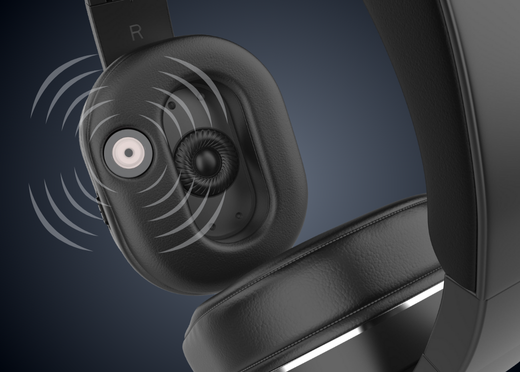Hearing loss affects approximately 15% of population. Often overlooked, it can impact individuals of all ages and typically develops gradually. To minimize the impact on a person's quality of life, early detection is crucial. In this article, we explore the main symptoms, causes, degrees of hearing loss, and the groups most at risk of developing hearing problems.
Signs of Hearing Loss
What are the first signs of hearing loss? Mild hearing loss symptoms include difficulty hearing in noisy environments, asking others to repeat themselves, or frequently adjusting audio devices. For adults, signs of hearing loss can vary:
- Difficulty following conversations when multiple people are speaking or in noisy environments.
- Sudden decline in the quality of conversations and social interactions.
- The sensation that others are mumbling, leading to frequent requests for repetition.
- Trouble identifying the direction of sounds, causing orientation problems.
- Tinnitus (ringing or buzzing in the ears).
- Turning up the volume excessively on devices like televisions or radios.
- Unusual fatigue by the end of the day.
Specific hearing condition as unilateral hearing loss (affecting only one ear) has specific symptoms:
- The need to turn the head towards the functioning ear to hear the conversation.
- This type of hearing loss can be particularly debilitating, as the brain loses its ability to localize sounds in space due to the lack of sound input from both ears.
Moderate to severe hearing loss has a greater impact on daily life, with more advanced and specific difficulties:
- Difficulty hearing certain sound frequencies, particularly high-pitched sounds like children’s voices or birdsong.
- The need to ask people to repeat themselves frequently, leading to social embarrassment, avoidance, isolation, and potentially depression.
Causes of Hearing Loss
Like symptoms, the causes of hearing loss are varied.
Hearing loss can be congenital, occurring at birth, with 80% of these cases in children attributed to genetic factors and 20% linked to infections, such as cytomegalovirus (CMV) contracted during pregnancy.
In otherwise healthy individuals, hearing loss can develop later in life due to acquired causes, including:
- Age and aging: Known as presbycusis, this is the most common form of hearing impairment and is expected to affect one in three people by 2050.
- Prolonged noise exposure: Whether from recreational activities or work environments, consistent exposure to loud noises can damage hearing, often accompanied by tinnitus.
- Infections: Chronic ear infections or meningitis can harm the inner ear and affect sound perception.
- Ototoxic medications: Certain drugs, including specific antibiotics and chemotherapy treatments, can have toxic effects on the inner ear.
Diseases That Can Cause Hearing Loss
Diseases like Meniere’s disease, chronic infections, or auditory tumors such as acoustic neuromas can also lead to hearing loss. Meniere's disease affects the inner ear and causes tinnitus and vertigo. Acoustic neuromas are benign tumors that grow in the inner ear and can lead to progressive hearing loss.
Degrees of Hearing Loss
Hearing loss is classified by degree, typically determined through tests conducted by an ENT specialist.
- Mild loss: Symptoms include discomfort in noisy environments, but no issues in quiet settings. Hearing loss ranges from 20 to 40 decibels and can cause fatigue and difficulty following conversations with multiple speakers.
- Moderate loss: A person with moderate loss struggles to follow phone conversations without hearing aids. This type of loss ranges from 40 to 70 decibels and requires frequent volume adjustments on electronic devices.
- Severe to profond hearing loss: This degree of loss prevents understanding conversations, even in quiet environments, with a hearing loss of 70 decibels or more.
Three Major Consequences of Hearing Loss
Hearing loss can lead to:
- Social isolation: Difficulty participating in conversations can cause withdrawal from social situations.
- Cognitive decline: Long-term hearing impairment is linked to an increased risk of cognitive decline and dementia.
- Loss of autonomy: Struggling to communicate effectively can reduce a person's independence.
At-Risk groups for hearing loss
- Older adults:The elderly are most affected by hearing loss, with 65% of people over 65 experiencing hearing problems.
- Professionals exposed to noise: Workers in industries like construction, music, and manufacturing are at higher risk for hearing damage.
- Certain health conditions or medications: Chronic ear infections, head trauma from accidents, or the use of ototoxic drugs can contribute to hearing loss.
Diagnosis, Prevention and Treatment
At the first signs of hearing loss, a medical exam is essential for proper testing. An ENT specialist will assess your hearing and recommend an appropriate solution. For those over 50, hearing check-ups should become more frequent to monitor any worsening symptoms.
In terms of prevention, healthcare professionals recommend:
- Using ear protection (earplugs or noise-canceling headphones) in noisy environments.
- Lowering the volume and limiting prolonged use of headphones.
- Avoiding prolonged exposure to loud sounds without adequate protection.
Technological solutions include:
- Hearing aids: In-ear or behind-the-ear devices for mild to severe hearing loss.
- Assistive listening devices: For those who cannot use traditional hearing aids, these devices offer an alternative for amplifying sound.













